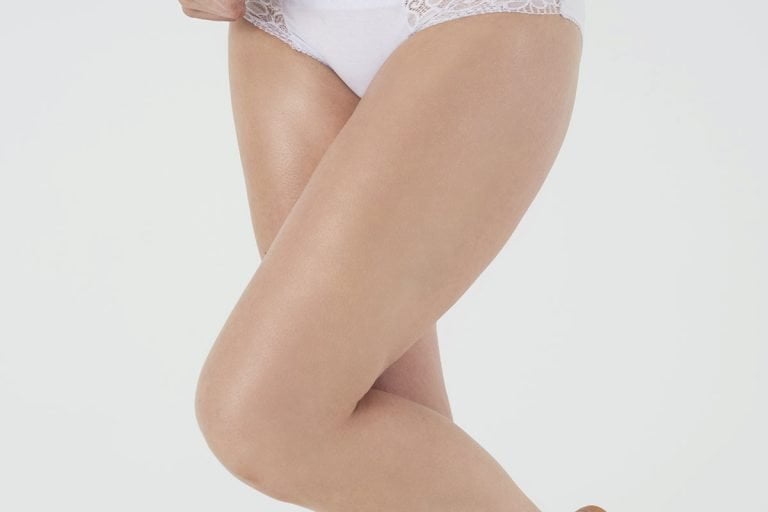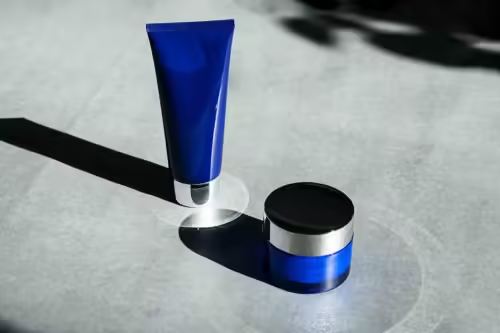Hamilton Skin Clinic Treatment stats
Treatment Time
Each session typically lasts between 30 to 45 minutes, depending on the area being treated and the method used.
Recovery Time
Minimal downtime is expected. Patients can usually return to their daily activities immediately, with minor redness or swelling subsiding within a few hours.
Recommendation
For optimal results, treatments may be repeated every 6 to 12 months, depending on the method and individual response to the treatment.
Results
Noticeable reduction in sweating is often seen within a few days to a week after treatment, with effects lasting several months.
Effectiveness
High effectiveness in significantly reducing excessive sweating, with most patients experiencing a marked improvement in their condition and quality of life.
Hyperhidrosis: Excessive Sweating Treatment
Sweating is a natural process, but for some, it becomes excessive and disruptive, impacting daily life. This condition, known as hyperhidrosis, can cause annoyance, embarrassment, and sometimes social anxiety.
Hyperhidrosis affects 1% of the population, and Hamilton Skin Clinic have medical professionals who can help.
The Science Behind the Light
What sets IPL apart from its predecessors, particularly traditional cosmetic lasers, is its unique approach. Traditional lasers use a single, focused wavelength to target specific issues. In contrast, IPL therapy boasts a broader spectrum of light, with each wavelength designed to address different layers and issues within the skin. This approach allows IPL to tackle a wider range of issues, from pigmentation to vascular irregularities, and even unwanted hair removal. This versatility, coupled with its precision, has truly changed the landscape of skin health, delivering transformative results for individuals worldwide.
When Sweating Becomes Excessive
Sweating is necessary for temperature regulation, but with hyperhidrosis, it becomes uncontrollable. Common signs include
Excessive underarm sweat
axillary hyperhidrosis
Slippery, sweaty palms
palmar hyperhidrosis
Clammy feet
plantar hyperhidrosis
Facial sweating
craniofacial hyperhidrosis
Primary vs. Secondary Hyperhidrosis
There are two main types of hyperhidrosis
Primary Hyperhidrosis
This is the most common form, often genetic and not caused by an underlying medical condition. It typically affects hands, feet, or underarms.
Secondary Hyperhidrosis
This less common type arises from another medical condition, medication, or hormonal changes. It can affect larger areas of the body.
What Our Clients Say
 Caitlin Bath13 September 2024Jo is a very experienced and knowledgeable practitioner; she expertly combines medical knowledge with natural intuition to produce customised and effective solutions. I’ve had the pleasure of having my skin treated by Jo throughout my pregnancy, and she is fantastic at giving all the information to ensure I feel comfortable and in control, together with amazing treatments that have really made a huge difference to my skin. Thank you Jo! You’re a miracle worker xx
Caitlin Bath13 September 2024Jo is a very experienced and knowledgeable practitioner; she expertly combines medical knowledge with natural intuition to produce customised and effective solutions. I’ve had the pleasure of having my skin treated by Jo throughout my pregnancy, and she is fantastic at giving all the information to ensure I feel comfortable and in control, together with amazing treatments that have really made a huge difference to my skin. Thank you Jo! You’re a miracle worker xx Christine Eldridge12 September 2024Jo is absolutely incredible! She has always gone above and beyond to explain each step of the procedures / process to me. She makes you feel sooo comfortable and there is no such thing as a silly question. Jo has impeccable customer care skills and is a genuine, lovely human. Would recommend her to absolutely everyone! If you’re after professional and non judgemental care, look no further!
Christine Eldridge12 September 2024Jo is absolutely incredible! She has always gone above and beyond to explain each step of the procedures / process to me. She makes you feel sooo comfortable and there is no such thing as a silly question. Jo has impeccable customer care skills and is a genuine, lovely human. Would recommend her to absolutely everyone! If you’re after professional and non judgemental care, look no further! Kim Willis27 July 2024The introduction to Jo and her clinic was nothing but professional. Her knowledge and experience accompanied by a friendly bedside manner make you feel relaxed and confident. Thank you for an incredible natural result in removing my fine lines around my lips.
Kim Willis27 July 2024The introduction to Jo and her clinic was nothing but professional. Her knowledge and experience accompanied by a friendly bedside manner make you feel relaxed and confident. Thank you for an incredible natural result in removing my fine lines around my lips. Phil Lavelle27 July 2024Recently I attended Hamilton Skin Clinic and received some injectable’s for my face after loosing 34 Kg. I highly recommend Jo Wilson a qualified nurse practitioner who provides a professional service. I am extremely happy with the outcome and I look younger. Thanks Jo.
Phil Lavelle27 July 2024Recently I attended Hamilton Skin Clinic and received some injectable’s for my face after loosing 34 Kg. I highly recommend Jo Wilson a qualified nurse practitioner who provides a professional service. I am extremely happy with the outcome and I look younger. Thanks Jo. Kirby Shannon5 July 2024The experience at Hamilton skin clinic is an immersion into opulence. Jo’s attention to detail and aesthetic judgement touch every part of the experience. You really feel cared for and put at ease with her depth of knowledge and genuine caring approach. The results speak for themselves when you walk out looking and feeling a million bucks ❤️
Kirby Shannon5 July 2024The experience at Hamilton skin clinic is an immersion into opulence. Jo’s attention to detail and aesthetic judgement touch every part of the experience. You really feel cared for and put at ease with her depth of knowledge and genuine caring approach. The results speak for themselves when you walk out looking and feeling a million bucks ❤️ Ella5 July 2024I had an incredible experience with Jo! She made my lips look absolutely amazing, and is a total pro at what she does, and also incredibly sweet and takes the time to explain everything thoroughly. Her attention to detail and skill are outstanding, and she considers everything to give me the best look possible, and also made sure I felt super comfortable throughout the entire process! I'm beyond happy with the results! I'm so glad I found her!
Ella5 July 2024I had an incredible experience with Jo! She made my lips look absolutely amazing, and is a total pro at what she does, and also incredibly sweet and takes the time to explain everything thoroughly. Her attention to detail and skill are outstanding, and she considers everything to give me the best look possible, and also made sure I felt super comfortable throughout the entire process! I'm beyond happy with the results! I'm so glad I found her! Dyr Darling2 July 2024Jo at Hamilton Skin Clinic is incredibly skilled and knowledgeable! Her expertise is evident from the moment you sit down for your consultation. She takes time to listen to your concerns and works with you to create the perfect treatment plan. I myself worked alongside Jo in my own business and her constant care and professionalism was admirable.
Dyr Darling2 July 2024Jo at Hamilton Skin Clinic is incredibly skilled and knowledgeable! Her expertise is evident from the moment you sit down for your consultation. She takes time to listen to your concerns and works with you to create the perfect treatment plan. I myself worked alongside Jo in my own business and her constant care and professionalism was admirable. Charlotte Deans18 June 2024Jo is amazing! It’s very obvious she is very experienced and knowledgeable, quick and painless Botox and the results are fantastic. Wouldn’t trust anywhere else!
Charlotte Deans18 June 2024Jo is amazing! It’s very obvious she is very experienced and knowledgeable, quick and painless Botox and the results are fantastic. Wouldn’t trust anywhere else! Cassandra Nathan - Patuawa10 April 2024Jo is awesome! I just had my tear troughs done recently and was super nervous because I’d heard it was really painful, but she made it near painless & I have no bruising 🥰 also had my Botox done by Jo and love the results! So nice to find a cosmetic nurse who is caring and takes her time to make sure you get great results. Highly recommend 🙌
Cassandra Nathan - Patuawa10 April 2024Jo is awesome! I just had my tear troughs done recently and was super nervous because I’d heard it was really painful, but she made it near painless & I have no bruising 🥰 also had my Botox done by Jo and love the results! So nice to find a cosmetic nurse who is caring and takes her time to make sure you get great results. Highly recommend 🙌 Taryn Walker16 March 2024Jo made me feel so incredibly comfortable throughout my entire session, honestly couldn’t be happier and can’t recommend this lovely lady enough!Google rating score: 5.0 of 5, based on 80 reviews
Taryn Walker16 March 2024Jo made me feel so incredibly comfortable throughout my entire session, honestly couldn’t be happier and can’t recommend this lovely lady enough!Google rating score: 5.0 of 5, based on 80 reviews
Finding Relief
If you suspect hyperhidrosis, consulting a dermatologist, or an experienced cosmetic doctor or nurse is crucial. At Hamilton Skin Clinic, we have hyperhidrosis experts who can diagnose the condition and recommend the best course of treatment. Here are some potential options:
- Prescription-strength antiperspirants
- Iontophoresis therapy
- Neuromodulator injections
- Medications (in some cases)
How Injections Work for Hyperhidrosis
Botulinum toxin neuromodulators work by temporarily blocking the nerve signals that stimulate sweat glands. Here’s the process
1. Consultation
A medical professional will assess your hyperhidrosis, discuss your medical history, and determine if botulinum toxin is a suitable option.
2. Preparation
The injection area is typically cleaned and numbed with a topical anesthetic cream to minimise discomfort.
3. Injection
Using a very fine needle, we inject tiny amounts of the medicine into specific points in the targeted area (e.g., underarms, palms).
4. Recovery
After the injection, you can resume most activities right away.
Additional Considerations
Results
Studies show you can significantly reduce sweating by 82–87% in the treated areas
Duration
The effects typically last 3-6 months. Repeat injections are needed to maintain reduced sweating.
Side Effects
In some cases, temporary side effects like minor bruising, swelling, or temporary muscle weakness at the injection site can occur. However, these are usually mild and resolve quickly.

































